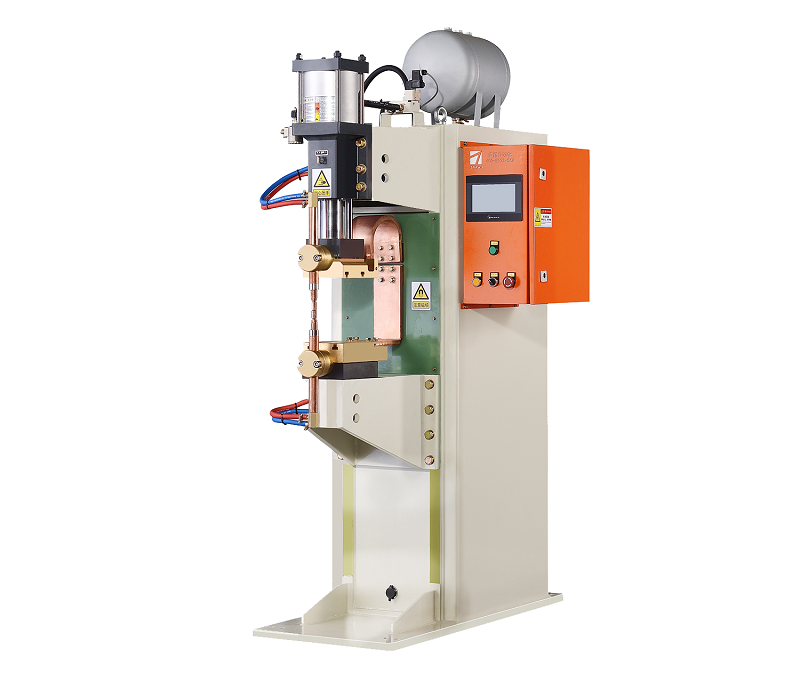Ang pagbuo ng electrode displacement detection system para samedium frequency spot welding machineay mabilis na umunlad sa mga nakaraang taon. Umunlad ito mula sa simpleng displacement curve recording o basic instrumentation hanggang sa mga sopistikadong control system na kinasasangkutan ng pagpoproseso ng data, alarm function, at feedback control. Ang pangunahing detektor ay binubuo ng mga sensor, amplifier, comparator, display, at iba pang mga bahagi.

Ang mga simpleng instrumento na ito ay matipid ngunit walang katumpakan at kontrol ng feedback, na nililimitahan ang kanilang pagiging angkop. Samakatuwid, ang mga ito ay bihirang ginagamit ngayon. Ang microprocessor-controlled system, sa kabilang banda, ay binubuo ng mga displacement sensor, encoder, displacement feedback interface, central processing unit, at display. Ang system na ito ay nagbibigay-daan sa real-time na feedback at lumitaw noong huling bahagi ng 1970s.
Ang mga displacement sensor ay may iba't ibang anyo gaya ng mechanical, potentiometric, capacitive, inductive, at grating. Ang pagpili ay depende sa katumpakan ng pagsukat, kadalian ng paggamit, at gastos. Sa kasalukuyan, karamihan sa mga system ay gumagamit ng mga inductive at grating sensor.
Ang axial differential inductance sensors ay binubuo ng dalawang inductive coils, magnetic pole, miniature steel columns, guide sleeves, at adjuster. Ang mga coil na ito ay naiiba na konektado sa tulay ng inductance meter. Ang oscillator ng metro ay naglalabas ng stable na high-frequency na boltahe, na inilapat sa mga inductive coils, magnetic pole, miniature steel column, guide sleeves, at adjuster.
Kapag ang magnetic pole ay nasa gitna (ibig sabihin, ang displacement ay zero), ang inductance ng parehong coils ay pantay, na nagreresulta sa isang balanseng tulay at zero output boltahe. Habang lumilipat ang magnetic pole, tumataas ang inductance ng isang coil, habang bumababa ang isa, na nagiging sanhi ng pagiging hindi balanse ng tulay at bumubuo ng output voltage na proporsyonal sa displacement. Ang polarity ng output boltahe ay nagpapahiwatig ng direksyon ng pag-aalis. Ang mga aktwal na produkto, tulad ng GCH-1, ay bumubuo ng boltahe ng output sa tulay, na pagkatapos ay pinalakas at demodulate upang makakuha ng mga halaga ng displacement. Ang phase-sensitive demodulation ay ginagamit upang matiyak na ang katangian ng curve ng rectified bridge current ay tumatawid sa zero point, na inaalis ang natitirang boltahe.
Suzhou Agera Automation Equipment Co., Ltd. specializes in the development of automation assembly, welding, testing equipment, and production lines. Our products are primarily applied in household appliances, automotive manufacturing, sheet metal, and 3C electronics industries. We offer customized welding machines, automated welding equipment, assembly welding production lines, and conveyor lines tailored to the specific needs of our clients. We aim to provide suitable automation solutions to facilitate the transformation and upgrading of traditional production methods to high-end production methods. If you’re interested in our automation equipment and production lines, please feel free to contact us: leo@agerawelder.com
Oras ng post: Abr-08-2024







